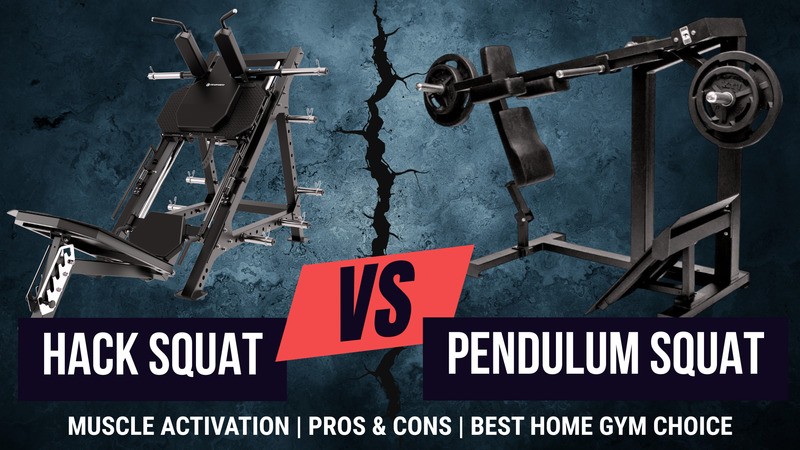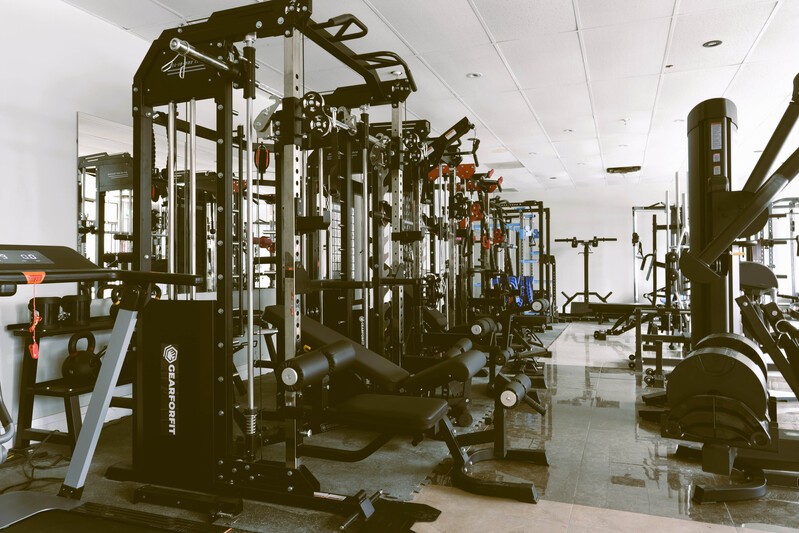blog
Essential Equipment for Powerlifting
May 01, 2025Creating a home gym tailored for powerlifting takes thoughtful planning and a focus on equipment that can handle serious weight. Since powerlifting centers around three main lifts—squat, bench press, and deadlift—your setup should support these core movements safely and efficiently. Below is a guide to assembling the ultimate powerlifting space at home.
Core Equipment for Powerlifting Training
1. Power Rack – The Heart of Your Setup
A sturdy power rack is non-negotiable for a powerlifting gym. This all-in-one station allows you to train squats, bench presses, overhead presses, and more—all with built-in safety measures.
What to Look For:
-
Supports at least 1,000 lbs
-
Adjustable J-hooks and safety spotter arms
-
Integrated pull-up bar for bodyweight exercises
-
Westside hole spacing for fine-tuned bar placement
-
Robust freestanding or bolt-down frame
Optional Upgrades:
-
Safety straps or pins
-
Dip bar attachment
-
Landmine attachment for rotational work
2. Olympic Barbell – Your Lifting Essential
A proper Olympic barbell is critical. For powerlifting, you’ll want a bar that’s stiff, strong, and competition-ready.
Key Specs:
-
20 kg (men) or 15 kg (women)
-
29 mm shaft diameter (standard for powerlifting)
-
Aggressive knurling with center knurl for squats
-
IPF-standard knurl markings for grip consistency
-
Minimum 190,000 PSI tensile strength for durability
-
Smooth sleeve rotation via brass bushings or needle bearings
Tip: Consider a dedicated deadlift bar with more flex and a thinner shaft for deadlift-specific training.
3. Weight Plates – The Load That Matters
You’ll need reliable plates to stack on your barbell. Depending on your budget and preference, you can choose from:
-
Iron Plates: Affordable, traditional option.
-
Calibrated Steel Plates: Precision weights for competition-style accuracy.
-
Bumper Plates: Best for protecting floors during deadlifts.
-
Microplates: Small increments (0.5 kg to 2.5 kg) for gradual strength gains.
4. Adjustable Bench – For More Than Just Pressing
A heavy-duty bench opens up a range of exercises, especially for the bench press. Choose one that offers both stability and adjustability.
Features to Consider:
-
Flat to incline positions (0–90 degrees)
-
1,000+ lb weight capacity
-
Firm, non-slip padding
-
12-inch width (IPF standard)
-
Optional wheels for mobility
5. Deadlift Platform or Flooring Protection
Heavy deadlifts can wreak havoc on your flooring. Invest in proper floor protection:
Options:
-
Rubber Horse Stall Mats: At least ¾-inch thick for impact resistance.
-
Deadlift Platform: Wood center with rubber sides for barbell drops.
-
Drop Pads: Cushions the bar for quieter, gentler landings.
Additional Tools for a Complete Setup
Lifting Gear for Support and Safety:
-
Lifting Belt: 10-13 mm leather for core stability.
-
Wrist Wraps: Stabilize wrists during heavy presses.
-
Knee Sleeves: Support and warmth for squats.
-
Deadlift Socks: Protect shins from bar scrapes.
-
Chalk or Liquid Grip: Improves hold on the bar.
Variable Resistance Tools:
-
Resistance Bands: Add accommodating resistance to squats, bench presses, or deadlifts.
-
Chains: Gradually increase resistance as the bar rises.
Upper Body Accessories:
-
Pull-Up Bar: Great for overall upper body strength. Often built into power racks.
-
Lat Pulldown Attachment: Helps develop back strength crucial for deadlifts and bench presses.
Optional: Adjustable Dumbbells
While not essential for the big three lifts, dumbbells add variety for accessory work, helping balance muscle development and prevent injuries.
Organizing Your Space
A clutter-free gym not only looks better but also improves your training efficiency.
Storage Solutions:
-
Plate Tree: Keeps plates organized and easy to access.
-
Barbell Holder: Stores bars vertically or horizontally.
-
Gym Flooring: Reduces noise and protects surfaces.
Investing in quality, durable equipment pays off in the long run. Your power rack, barbell, and plates form the core of your gym, while accessories and storage options fine-tune the space to your needs. For smaller areas, consider space-saving gear like foldable racks or wall-mounted storage.
With the right setup, you’ll have a training environment that fosters consistent progress and long-term strength gains—right in the comfort of your own home.






